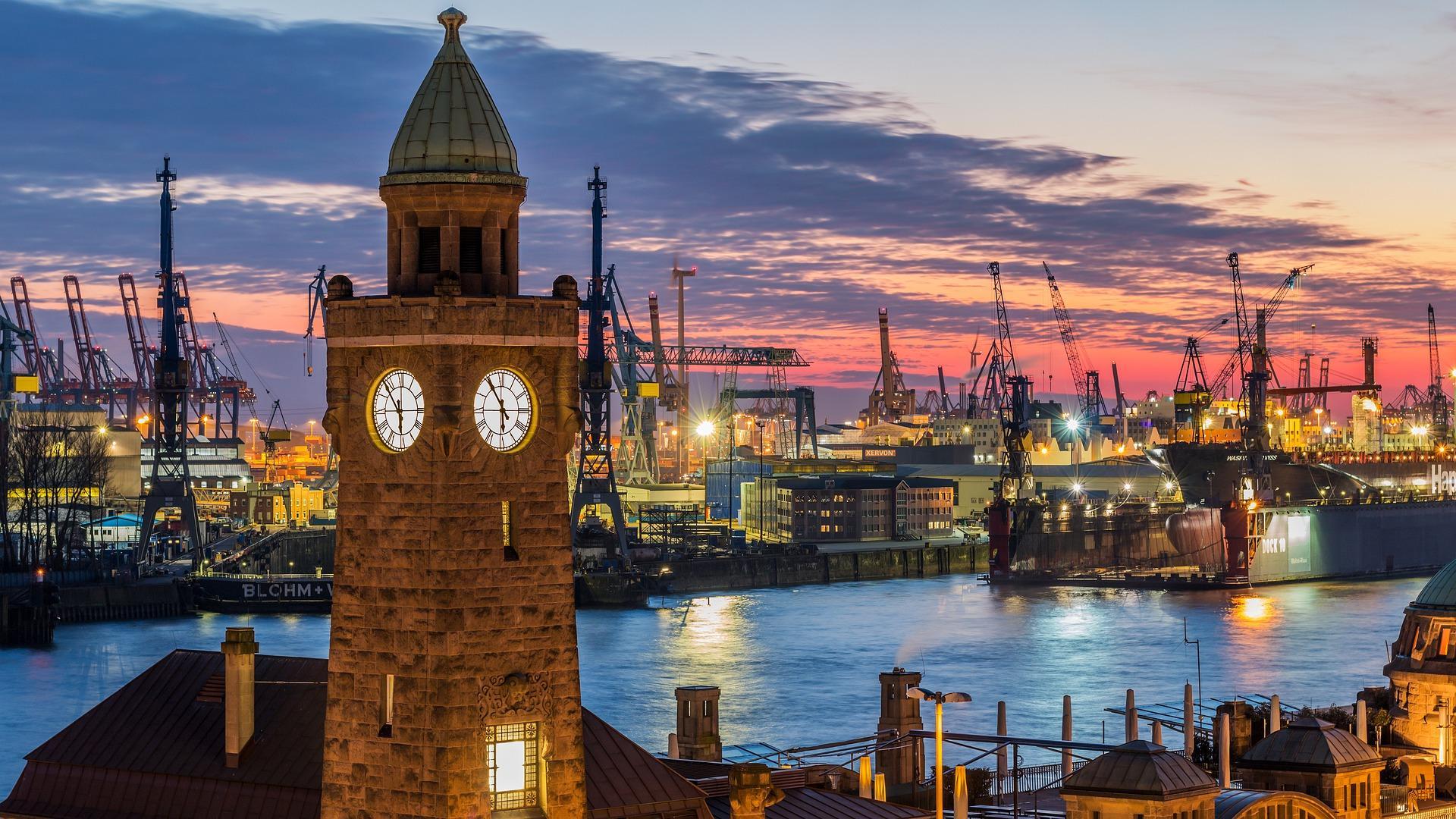What do you think of when someone tells you about the Hamburg Port Anniversary? Do you hear a ship's piano and shanty songs, see the seagulls looking for food on the bollards or even hear the calls of the barkers at the fish market? Hamburg's port has charm - and is one of the most important hubs for global maritime traffic. OCS took a look at the logistical “equivalent” of its own world full of containers.
The success story of the port of Hamburg began with a small landing place in Hamburg's old town in the 9th century, which was able to gain harbor rights in 1189. Since then, the port has continued to grow and has proven to be the most important port of call for maritime traffic in Germany over the centuries. Today the facts can be read almost with awe: around 8,000 ships call at the port every year and can dock at one of the almost 300 berths on the 43 kilometer long quay walls for seagoing vessels. In addition, there are more than 2,300 freight trains per week that need to be loaded. Loading and unloading takes place with the help of four ultra-modern container terminals, three cruise terminals and around 50 specialized handling facilities for mobile RoRo and general cargo loading as well as bulk goods of all kinds. It is not particularly surprising that almost 7,300 logistics companies have found a home within the city limits . And you can believe us, these are just some of the data that Port of Hamburg Marketing e. V. is particularly proud.
The location on the Elbe
As the largest port in Germany and one of the few ports in the world that are located in the middle of a major city, the Port of Hamburg is one of the trademarks that clearly characterizes its city and its image. The only real disadvantage: the route for the container freighters across the Elbe to the port is extremely long. Already 90 kilometers from Hamburg near Brunsbüttel, the ships sail from the North Sea into the mouth of the Elbe after reaching the German border by passing through Helgoland and Cuxhaven. From here on, the pilots are responsible for guiding the huge “pots” safely into the harbor - because even for an experienced captain with a fully loaded ship that is almost 400 meters long and over 50 meters wide, this is anything but a walk in the park you know the pitfalls of the narrow channels of the Elbe.
Water freight hub
The throughput volumes speak for themselves: in 2018, 8.73 million TEU (Twenty-foot Equivalent Unit, German twenty-foot standard container) were unloaded, reloaded and loaded, which corresponds to over 23,900 containers in one day. The volume handled amounted to around 135.1 million tonnes of freight for international sea transport. But it's not just the goods that travel across the sea from Hamburg or come back from there: around 900,562 passengers checked in on cruise ships and other boats. While the port of Bremerhaven benefits more from the profitable vehicle transshipment to North America, Hamburg's goods are very much “Asia-biased”. Shipping benefits from international globalization, with China in particular being the main customer.
In Hamburg they say goodbye!
At least that's what Heidi Kabel once said, singing about the sailor who ran away to Shanghai. The people of Hamburg are considered friendly hosts, cosmopolitan and helpful. This is also noticeable during the celebrations for the annual harbor birthday, when more than a million visitors flock to the city on the Elbe on the first weekend in May to get a taste of the harbor air. Safety always comes first: the water police patrol 24 hours a day to combat smuggling, terrorism and other crimes and thus ensure the safety of the crews.
Shipping is the “engine” of international globalization
In terms of size, Hamburg is behind the second largest port in Europe, Antwerp (Belgium), which handles the highest volume of general cargo handled in the world. The largest European port, however, is in Rotterdam, the Netherlands, which is by far the largest deep-water port on the European continent. 468.98 million tonnes of sea freight were loaded on the Rhine-Meuse Delta in 2018.
What can be said for the future is that the importance of the Port of Hamburg for Germany as a business location will not diminish in the coming decades. The turnover rate for global shipping to and from Germany will tend to continue to increase and the technology will change significantly. The Hamburg Port Authority has launched a project that should be part of everyday life on the Elbe in just a few years. Various scientists and specialized companies have developed self-propelled water drones that glide through the harbor basins and use their own tracking system to locate shoals and mud deposits on the river bottom. Using the data collected, dredging ships can remove the unwanted mounds of silt - the first tests were promisingly successful, and regular operation will be possible in a few years.
Research is also extremely important in other areas of logistics; many measures are important for both land and sea transport. But before flying containers, self-driving ships or freight trains and electric trucks that find their way to the terminals without drivers become the order of the day, we, as your trusted freight forwarder, will support you in all aspects of your transport needs.






